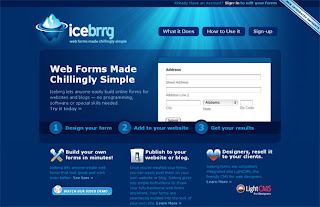From Color in Design - part 1, you have learned the meanings of various colors. To use colors effectively, changing their properties can result in different effects. With the knowledge of color properties, creating a color scheme would be less complicated. This post will cover hue, saturation,value, chroma, tints, tones and shades of colors.
Hue
What it is: Hue basically refers to colors. Blue, green, red are hues.
Effect in design: Convey important messages. (Messages of each colors can be found in part 1)
 |
| Primary Hues |
 |
| Secondary Hues |
Example:
 |
| Pure hues used to give emphasize on the mood of website |
Saturation
What it is: How hues appear under different lighting
Effect in design: Colors with similar saturation levels create more cohesive-looking designs. Low saturated colors would make high saturated colors stand out. A good example for using high vs low saturated colors would be text with a high saturated color on a background with low saturated color.
Note: High saturated colors do not refer to light colors.
 |
| Low Saturated Red |
 |
| High Saturated Red |
Example:
 |
| High saturated blue texts are used to stand out from low saturated blue background |
Chroma
What it is: Purity of color. Hue with high chroma means no black, white or gray is added.
Effect in design: It will be elaborated in the following properties, namely tint, tone and shade.
Tint
What it is: Hue with white added. Very light tints are sometimes called pastels.
Effect in design: Create vintage or lighter designs. Pastels tints can make designs appear to be more feminine or appeal to parents of babies and toddlers.
 |
| Red Tint |
Example:
 |
| Tints bring lighter mood |
Tone
What it is: Hue with gray added.
Effect in design: Can create a vintage or sophisticated/elegant feel to websites, depending on the hues.
 |
| Red Tone |
Example:
 |
| Combining different tones can give a vintage feel to website design |
Shade
What it is: Hue with black added.
Effect in design: Can serve as neutral colors. Shade is combined with tints to avoid giving a dark and heavy feel.
 |
| Red Shade |
Example:
 |
| Red shaded background gives neutrality to the overall design, as it reduce the overwhelming effect of pure red |
Value
What it is: How light or dark a color is.
Effect in design: Colors with high contrast values, especially the ones with high chroma, generally create more aesthetically pleasing designs.
 |
| Light Red |
 |
| Dark Red |
Example:
 |
| Different values in colors display contrast, which make the overall design visually appealing |
0 comments:
Post a Comment